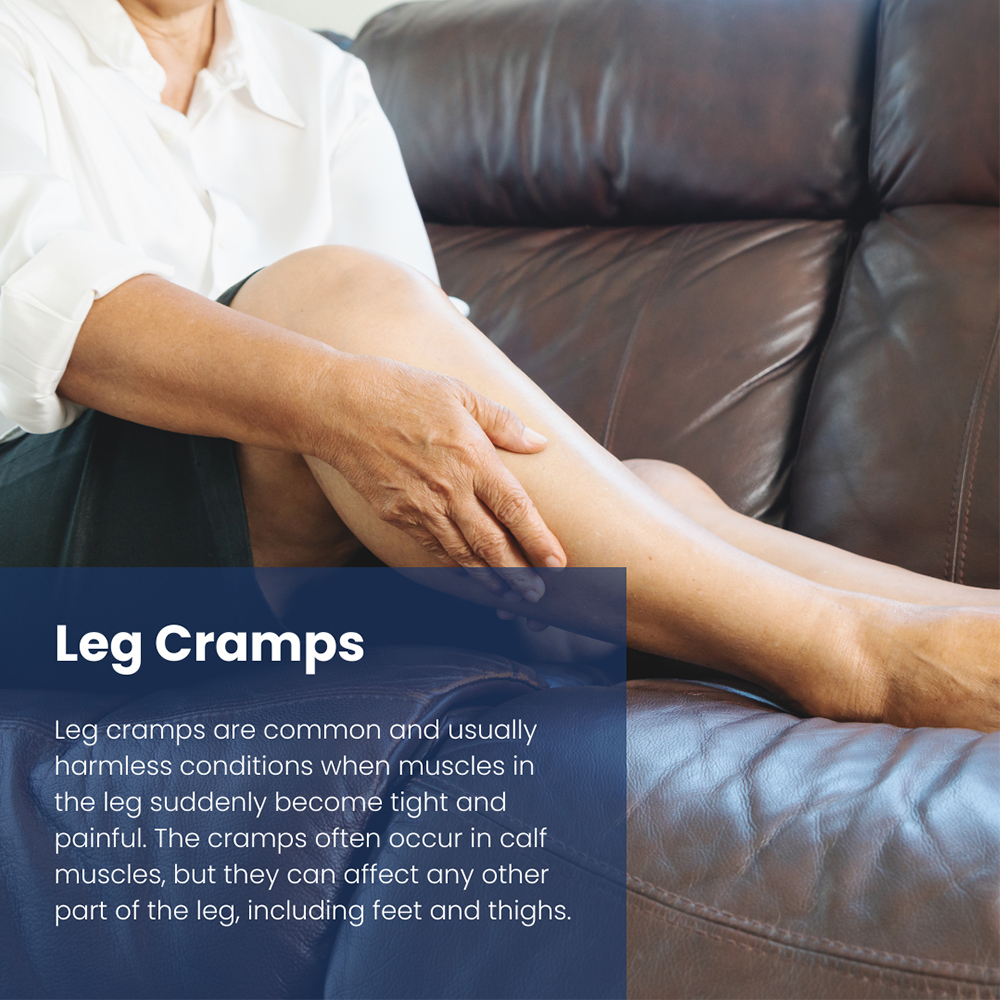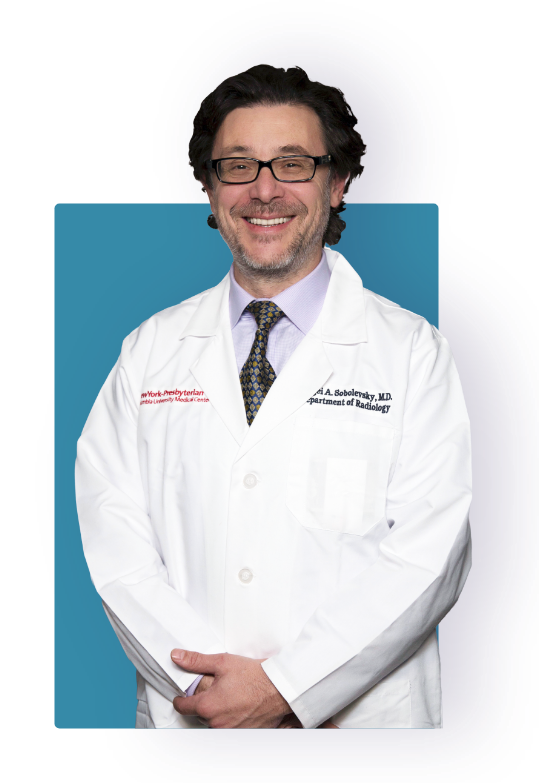Recurring leg cramps can disturb your home and work life and even restrict your movements with intense pain, tingling, and numbness in the leg that strikes unexpectedly. You should not ignore tormenting muscle cramps as they may be a sign of nerve damage or poor blood flow and require immediate medical attention. Schedule an appointment with an expert vein doctor to know about the possible causes of leg cramps and their treatment. Dr. Sergei Sobolevsky at the Downtown Vein & Vascular Center will thoroughly investigate your symptoms and address the underlying issue to provide lasting relief.
What Are Leg Cramps?
 Leg cramps can strike suddenly with intense, out-of-the-blue leg pain. Also called a ‘Charley horse’, a cramp occurs when the leg muscles contract involuntarily and cannot relax. Camps can strike in hands, arms, abdomen, and feet but calves and thighs are the most frequently affected areas. A cramp can last from several seconds to a few minutes, and you can feel a raised knot when you touch the affected area.
Leg cramps can strike suddenly with intense, out-of-the-blue leg pain. Also called a ‘Charley horse’, a cramp occurs when the leg muscles contract involuntarily and cannot relax. Camps can strike in hands, arms, abdomen, and feet but calves and thighs are the most frequently affected areas. A cramp can last from several seconds to a few minutes, and you can feel a raised knot when you touch the affected area.
Leg cramps are common and usually harmless conditions when muscles in the leg suddenly become tight and painful. The cramps often occur in calf muscles, but they can affect any other part of the leg, including feet and thighs.
In three out of four cases, cramps occur at night while you are asleep. Even after the cramp has passed, you may feel pain and tenderness in the leg for several hours, depending on the severity of the attack.
Read more: Is Leg Pain at Night A Warning Sign of Vascular Disease?
What Happens During a Leg Cramp?
During a cramp, the muscles suddenly contract, which shoots pain up the leg. It is called a spasm, and during this spasm, you cannot control the affected muscles. The cramps can last anywhere from a few seconds to 10 minutes. You can only move the affected muscles once the spasm has passed.
Mostly very young and old people get afflicted by leg cramps. It has been observed that athletes and overweight people suffer from muscle spasms more than others. The risk for muscle cramps increases for those with an inactive lifestyle in their advanced age.
Leg Cramps Causes
Causes of leg cramps are sometimes unknown or idiopathic. It can be anything from something mild and harmless to a serious medical disorder that must be checked by an expert physician. You must visit a doctor who will diagnose the causes behind frequently occurring and painful leg cramps and identify the underlying medical conditions if any.
Some common possible causes of idiopathic leg cramps include:
- Abnormal nerve activity during sleep that leads to spasms
- Excessive strain on leg muscles
- Sudden restriction in the blood supply to the affected muscles
Secondary causes of leg cramps include:
- Pregnancy – the extra weight gain in pregnancy can put a strain on the leg muscles, increasing the chances of leg cramps
- Medical conditions – diabetes and nerve, thyroid, or liver issues can increase the frequency of leg cramps
- Exercise – leg cramps usually occur when you sit down after a rigorous workout
- Neurological conditions – they affect the nerves in leg muscles such as motor neuron disease or peripheral neuropathy
- Liver disease – if your liver is not working properly, toxins build up in the blood, which can lead the muscles into a spasm
- Infections – bacterial infections, such as tetanus can cause muscle spasms and cramps
- Toxin buildup – high levels of toxins or poisonous substances in the blood, such as lead or mercury, can cause leg cramps
- Dehydration – some people experience leg cramps when the salt or electrolytes levels in their body drop low due to inadequate water intake or excessive sweating
- Short tendons – tendons are tough bands of tissues that connect muscles with bone; tendons shorten with age, and when they become too short they can cause muscle contraction and cramps
Medications
Certain types of medications are known to cause leg cramps in a small number of people.
Medications that can trigger cramping include:
- Statins – they are prescribed to people having high blood cholesterol levels
- Diuretics – they are used for removing fluid from the body and treat problems like high blood pressure, heart failure, and some types of kidney diseases
- Raloxifene – it is a medication used for preventing osteoporosis or thinning of the bones in women who are going through menopause
- Nifedipine – it is recommended for patients suffering from angina and Raynaud’s phenomenon
- Nicotinic acid – it is prescribed for treating high cholesterol levels in the blood
- Conjugated estrogens
Do not stop taking your prescribed medication or start any new treatment without the doctor’s advice, as it could lead to other complications.
Consult your doctor if you think your leg cramp is a result of any of these secondary causes. The doctor will identify the reasons behind leg cramps using the most advanced diagnostic equipment and develop the best solution to prevent recurring painful episodes.
Insufficient Blood Supply
In some cases, leg cramps occur when a sufficient amount of blood does not reach the lower extremities of the body. Arteriosclerosis or narrowing of the arteries that deliver blood to the legs can also produce cramp-like pain in the legs and feet while you exercise or walk.
Reasons for insufficient blood supply include:
- A blood clot
- Malformations
- Tumors
Read more: Artery vs. Vein: What’s the Difference?
When to Seek Medical Assistance
Your leg cramps can be a sign of some underlying medical condition if they occur too frequently and cause excruciating pain. Do not let this pain and discomfort affect your health. Seek advice from an expert vein doctor to know what is triggering the cramps.
Seek immediate medical help if:
- The cramps last longer than 10 minutes, and the pain does not alleviate, despite exercise
- Cramps result after you come in contact with toxic or infectious substances or get exposed to elements like mercury or lead
Proper diagnosis and treatment become necessary if you get muscle cramps frequently or they are severe and wake you up from sleep at nighttime, leaving you unable to function the next day.
As a leading veins specialist, Dr. Sergei Sobolevsky will evaluate your vein health with a physical exam and screening tests with sound-wave technology that create images of blood flow in the legs to devise treatment options that ease your pain. If your cramps result from medication, the doctor may adjust the dosage or change the formula to avoid the side effects.
Read more: Why Are My Veins Blue And Green?
Prevention and Treatment
The best way to prevent painful muscle spasms is to control the circumstances that increase their likelihood. Ignoring leg cramps can only end up aggravating the condition, especially if they are a side effect of medication, dehydration, or infection in the body.
Some effective ways to treat occasional leg cramps include:
- Wearing compression socks
- Losing weight if needed
- Exercise and stretching to improve blood flow
- Applying hot or cold pad to ease tight muscles
- Minimally invasive procedure to remove the blood clot
The doctor prescribes treatment and medication to relieve cramps depending on the intensity of pain and the frequency with which they occur. However, if the leg cramps are a symptom of some other condition, addressing that underlying cause is the only way to seek relief.
Do not take persistent leg cramps lightly. They may seem easy to handle, but if self-care and prevention are not helping, you must get medical assistance. Schedule an appointment with an expert doctor to determine your vein health and find out more about the causes of intense leg pain and its effective cure. With advanced diagnostic equipment and careful physical examination, Dr. Sergei Sobolevsky at the Downtown Vein & Vascular Center will propose a customized treatment plan depending on your specific symptoms to provide lasting relief from cramps.

Sergei Sobolevsky, MD, is a leading specialist in endovascular medicine with experience in vascular and interventional radiology. Dr. Sobolevsky has decades of experience in the field, with over 25,000 procedures performed, accumulating extensive experience in image-guided minimally invasive medicine, diagnosing and treating a range of conditions.
Dr. Sobolevsky earned his Doctor of Medicine (MD) degree in 1997 from the University of Colorado School of Medicine. He received his specialty clinical training in vascular and interventional radiology at Harvard University. Later, he earned his MBA from the MIT Sloan School of Management. Recognized as a Castle Connolly Top Doctor and named to the Top Doctors New York Metro Area in 2020, 2021, and 2022, Dr. Sobolevsky is licensed in multiple states, has delivered presentations at numerous institutions in the US and abroad, and now acts as a clinical advisor for the biomedical industry. He also held multiple positions in the field during his career, including Chief of Vascular and Interventional Radiology at the Columbia University Medical Center in New York, NY, Senior Vice President in Clinical and Regulatory Affairs at Artann Laboratories in North Brunswick, NJ, and Medical Director at the American Endovascular and Amputation Prevention Center in Brooklyn.
More About Dr. Sobolevsky

